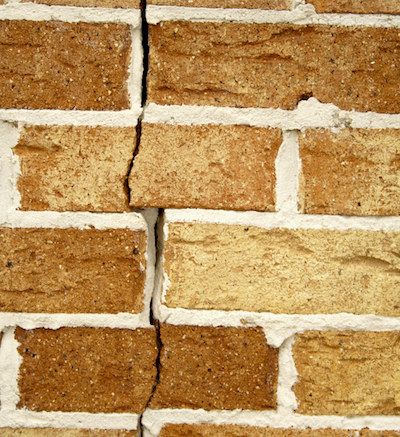“Without a solid foundation, you’ll have trouble creating anything of value.” Erika Oppenheimer
There are many sayings about the necessity of a solid foundation. The term “foundation” in analogies implies the groundwork or the initial work that is most important. This is the part to focus on; it’s the one thing that needs to be done right and done well so it lasts forever.
Most people tend to pay more attention to relational, professional, and even spiritual foundations rather than their literal foundations. Have you ever thought about the stability of your home foundation as much as the building blocks of a relationship or career? In order to maintain a solid foundation, homeowners should periodically check the state of their foundation and landscaping. At Kent Foundation Repair, our foundation experts recommend checking your foundation for potential issues at least twice a year. Ideally, this is done in the fall and spring.
Foundations are Important
A foundation has many functions to maintain your home’s integrity. Its job includes keeping out moisture, providing stability, insulating against all weather and natural conditions, and resisting movement (unlike the earth around it). It’s a very important job!
Your home will not last or endure the test of time and nature without a solid foundation.
As a foundation repair company, our focus is on literal foundations. Our top priorities include creating strong, stable, and level foundations that last and repairing foundations that need maintenance. We don’t expect every person to focus on their foundation the way we do. However, we recommend homeowners pay attention to the needs of their foundation.
An Informal Foundation Assessment
Homeowners should periodically check their foundation to ensure it is level, keeps out moisture, and is not moving. Our informal assessment will take about 30-45 minutes and includes an interior walk-through, exterior perimeter checkup, and assessing your landscaping.
An Interior Walk-Through
We often talk about checking a foundation for signs of underlying problems in our blogs. These telltale signs may be symptoms of foundation problems. The sooner you notice them and track changes, the easier it is to address the potential problems before they become costly.
Here’s a list of tasks and questions to ask yourself while walking around the interior of your home:
- Open and close doors and windows along the perimeter of the home. Are any doors or windows sticking or having trouble opening and closing? Are the doorways level and free of cracks around the frame?
- Open and close the interior doors. Are any doors not closing properly? Are the doors and door jambs leveled?
- Are there any cracks in the walls or ceiling?
- Are there sagging, cracked, or slanted floors in any room?
- If you have a basement, check those walls and windows as well. Are there any cracked or bowing walls in the basements?
- Homes with garages and/or any detached structures should be checked as well.
If you notice any of these symptoms, make note of them or take a picture. If cracks or gaps are small, measure and note the size. Then recheck these issues when you complete your next foundation checkup.
An Exterior Perimeter Walk Through

- Look at the exposed part of the foundation, basement wall, or crawlspace. Are there visible cracks? If so, note the location and length of the cracks.
- If you have a basement with windows, check the window frames. Is the frame level? Are there any cracks in the corners?
- For brick homes, check the mortar joints. This applies to cinder block walls, or any other type of block wall. Measure any cracks along the mortar joints.
- If you have a chimney, is it standing straight and tall? Or is it leaning? If so, look to see if the chimney has begun to separate from the house.
- Don’t forget to check your porches, decks, and sunrooms. Walk around to assess for leveled flooring that are free from cracks. If there are posts or columns, are these standing straight and tall like the chimney?
Assessing Your Landscape

- As previously mentioned, make sure the exposed part of your foundation or basement wall is free of plants, vines, debris, and built up dirt. This helps with air circulation and consistent soil moisture, which helps keep a foundation stable.
- Check the slope around your foundation. This area should be graded at least six inches within ten feet from the foundation base. The slope helps draw runoff away from the foundation, thus protecting it from water damage.
- Look at your gutter system. Clear any debris and clogs so water can run freely.
- Do you have gutter extensions to draw water away from the foundation? Extensions should expel water at least five feet away from the foundation.
- Are there a lot of plants around the perimeter of your home? This helps with the aesthetic appeal, but it may be hurting your foundation. Make sure large plants, or plants that require a lot of water, are at least five feet away from the foundation.
- Check tree roots and canopies near any structure. If there are large trees near your home, see if their limbs are touching the building. If so, they are likely too close. The trees’ root system may begin impacting your foundation. Consider removing these trees, or have a root barrier installed.
A Handy Checklist Always Helps
How did it go? Did you find anything concerning? If not, great!
We recommend homeowners check the state of their home at least twice a year, or with every season change. This simple walkabout will help you stay on top of early signs of foundation problems and allow time to address issues before they become costly.
To help your foundation endeavors, we’ve created a checklist tool for you. Our checklist includes all the steps of the informal home foundation checkup, along with space for you to record your findings.
If you ever do notice signs that your foundation may need repairs, don’t fret! Homeowners have many repair options that are cost-effective and we will address the underlying problems. The cheapest way to address any underlying problems begins with getting a free in-home assessment by a foundation expert. A professional will make sure your home foundation is in good condition and let you know of any issues that need to be watched or repaired. This is the easiest, cheapest way to really know what’s happening under your home.
When getting a free estimate, tell your foundation professional all the signs and symptoms you noticed in your informal assessment. Show them all the cracks and/or stuck windows and doors. Ask questions about any concerns you have.
Our technicians will take the time to listen and help you understand what is happening with your home. They will also give you every repair option available without trying to upsell you on everything.
With your informal assessment complete, you can rest easy. This easy task helps ensure your home is resting on a strong, stable foundation and can endure the winter months.
DOWNLOAD YOUR FOUNDATION CHECKUP LIST TODAY

